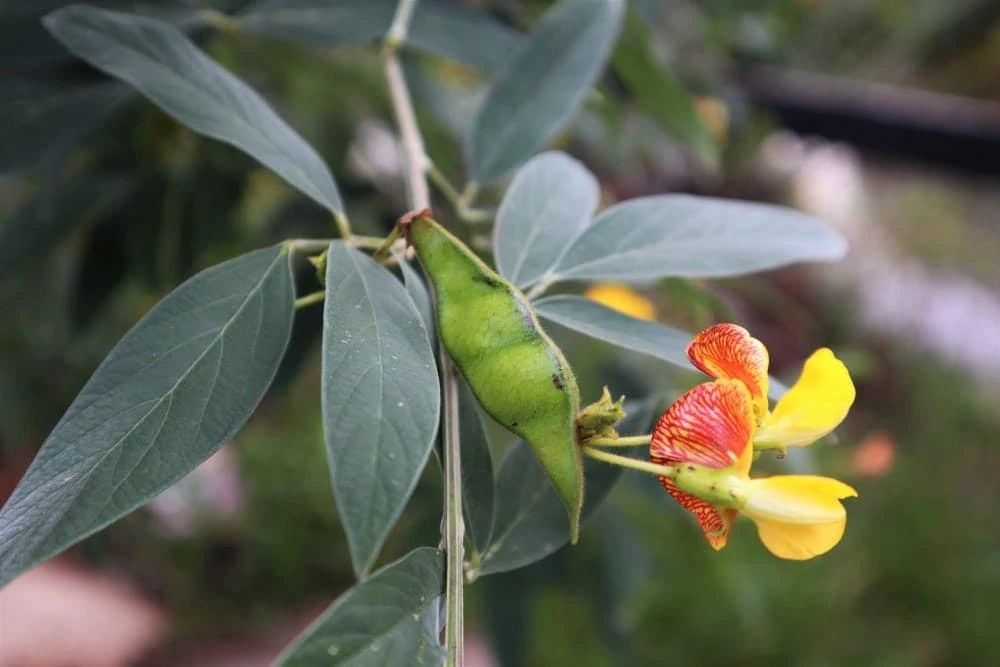by Amanda Rose Newton
With every season change, we see a change in the variety of plants present in our landscape. One plant’s expiration date is another plant’s beginning.
Those deceased plants can still offer a wealth of service in your garden, as, through the magic of decomposition, the available nutrients are slowly leached into the soil, ready to be taken up by hungry new plants.
This garden practice is well known in the Agriculture and Permaculture world as, “chop n’ drop”.

What is Chop N’ Drop?
This is certainly one of those instances where the name says it all! You “chop” (or cut) the old plant material and “drop” it on the ground. This is mimicking what plants would do if undisturbed in nature. When plants die (or dieback), old material falls to the ground, decomposes, and contributes food for the soil organisms (fungi, bacteria, and animals) while resulting in that beautiful compost-like humic layer. This method also keeps the roots in the soil, where they aid in keeping everything held together as well as keeping those needed air pockets for other plants to access.
WHEN is the right time to chop n’ drop?
While the concept might make sense and seem simple, as with anything there are times when it is appropriate to use this method and times when it is not. Follow the tips below to get a feel for when you should remove dead material or leave it to aid in garden health and vitality.
Best Plants for Chopping and Dropping
Plants that tend to have deep tap root systems, produce a lot of leafy material, and/or fix nitrogen are the IDEAL choices for this practice.
Deep Root Plants: Those deep-reaching roots can surpass some of the smaller, more fibrous roots of your garden veggies. By leaving them in the ground as is, you are giving other plants access to the abundance of nutrients that have accumulated.
Nitrogen Fixers: Perennial legumes are known to fix nitrogen in such a way that it is easy for any plant to easily access. They often store excess nitrogen in their root nodules so that when a plant is pruned, it sends those nutrients to the top of the plant and keeps accumulating more at the lower level, making other plants happy as well.
Herbs and Grasses: Low-lying plants like herbs are also common to see in chop n’ drop practice. They act as a “green mulch” which serves the same purpose of the traditional mulches purchased. Not only are the new plants benefiting from protection against erosion and weather, but the herbs will also break down to provide extra nutrition over time.
Top 5 Plants for Chop N Drop
Here is our shortlist for plants to start you on your plant recycling journey.
1. Pigeon Pea– This quick-growing legume is the chop n’ drop classic. Many grow it just for this purpose, as it produces a lot of biomass (leafy material) in a short amount of time. It also happens to be a legume whose roots are hard at work accumulating nitrogen that will live on after they are gone.

2. Moringa– It is everywhere these days, with good reason! Not only does it have numerous health benefits, it grows quickly leaving an abundance of leafy material for you to harvest and have enough remaining for a beautiful green mulch.
3. Nasturtiums– Speaking of green mulch, nasturtiums make for an especially attractive one. When planted with taller plants, they act as a natural barrier as is, even when alive, and when they die out during the hot months they provide excellent biomass.
4. Lupine- another legume, this one is an especially attractive addition to the garden that brings in the pollinators as well. Like the pigeon pea, it fixes nitrogen at the root level, which will be accessible even after the plant dies back.
5. Lemon Grass– Maybe not the first plant that comes to mind, but the biomass from one plant is substantial! This makes lemongrass a great groundcover/green mulch option.
While those are some examples of plants that can be used for chop n’ drop, just about ANY plant you prune, and drop will be beneficial.
Do be sure that none of the material is showing signs of fungus or bugs, as these can be transmitted to other areas of the garden unintentionally.
For more information on the practice of sanitation, hop on over to the Fall Prep blog that covers when and how to keep your garden healthy.
So the next time you are removing dead plants or pruning back overgrown limbs, save yourself some work, and simply chop n’ drop it! Your plants may be happier as a result!


